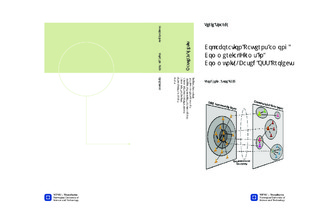| dc.contributor.advisor | Conradi, Reidar | nb_NO |
| dc.contributor.advisor | Cruzes, Daniela Soares | nb_NO |
| dc.contributor.advisor | Nguyen, Duc Anh | nb_NO |
| dc.contributor.author | Snarby, Terje | nb_NO |
| dc.date.accessioned | 2014-12-19T13:40:04Z | |
| dc.date.available | 2014-12-19T13:40:04Z | |
| dc.date.created | 2013-10-12 | nb_NO |
| dc.date.issued | 2013 | nb_NO |
| dc.identifier | 655615 | nb_NO |
| dc.identifier | ntnudaim:9515 | nb_NO |
| dc.identifier.uri | http://hdl.handle.net/11250/253316 | |
| dc.description.abstract | Context: Open Source Software (OSS) development is a highly distributed and collaborative activity and was initially performed by developers volunteering their time and effort. During the recent years, OSS has transformed to become a more mainstream and commercially viable software development approach. This is reflected in the increasing involvement from commercial firms. Currently, there exist little or no research literature examining how commercial firms collaborate across organizational boundaries and how this may affect community-based OSS projects.Objective: This thesis aims to help fill the identified gap by investigating the influence of organizational boundary on team collaboration and project evolution in community-based OSS projects by answering the following research questions: RQ1: How do commercial firms collaborate across organizational boundaries in community-based OSS projects?RQ2: How influential is firm awareness in community-based OSS projects?Method: A two-phased case study approach was adopted, compromising exploratory and descriptive analysis. The cases, Wireshark and Samba, were examined in a quantitative and qualitative approach using found documents and conducting interviews with firm-paid developers. Social network and thematic content analysis were applied.Results: This thesis provides the following three contributions:C1: Empirical data from two OSS projects providing knowledge related to how commercial firms collaborate with each others across organizational boundaries in community-based OSS projects.C2: A conceptual model illustrating commercial firm?s collaboration patterns across organizational boundaries in community-based OSS projects, extending Crowston?s onion model.C3: A set of recommendations to commercial firms that want to participate and utilize community-based OSS projects.Conclusion: Commercial firms participate and collaborate heavily in community-based OSS projects and are present in all the roles identified in Crowston?s onion model. Furthermore, independently of firm size and degree of involvement, the firms commonly have one person acting as a gatekeeper between the community and firm managing code, communication and/or bug issues. The findings indicate that firm awareness is a vital part of the firm cross-collaboration and mainly influence the development in a positive manner. | nb_NO |
| dc.language | eng | nb_NO |
| dc.publisher | Institutt for datateknikk og informasjonsvitenskap | nb_NO |
| dc.title | Collaboration Patterns among Commercial Firms in Community-Based OSS Projects | nb_NO |
| dc.type | Master thesis | nb_NO |
| dc.source.pagenumber | 170 | nb_NO |
| dc.contributor.department | Norges teknisk-naturvitenskapelige universitet, Fakultet for informasjonsteknologi, matematikk og elektroteknikk, Institutt for datateknikk og informasjonsvitenskap | nb_NO |

